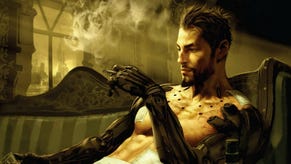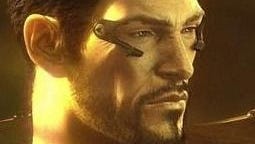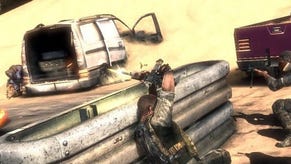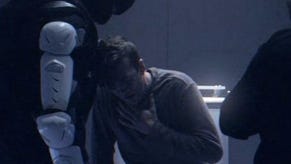Deus Ex: Human Revolution
The Revolution will not go unscrutinised.
Much like Hong Kong, Paris and New York were hubs in the original Deus Ex, Shanghai will be an open and exploration-demanding world - with apartments to rootle through, whorehouses to wander around in, Triad bases to converse and/or shoot within and the Ty-Young augmentation corporation to bother.
It won't however, be the first place you'll be let loose - much of the game's first six hours in fact takes place in Detroit, the home town of the game's hero Adam Jensen. (A man forever doomed to confusion with Extras and Ugly Betty star Ashley Jensen).
The Detroit we enter is one riven with debate over the mixing of flesh with machine. The year is 2027, two years before the birth of JC Denton and 25 years before the opening of Deus Ex, and mechanical human augmentation has left the laboratory and is now flying off the production line.
Monolithic corporations such as Sarif Industries sell augments to the rich and powerful (all intent on getting metal legs so they can jump higher) while factions such as the Humanity Front campaign against this sudden shift in evolution - representing the impoverished underclass who can't afford throat-mounted iPods.
Jensen is a private security specialist working for augment-entrepreneur David Sarif, who has charged him with protecting his staff on the eve of a historical political hearing that is due to debate the issue of human augmentation.
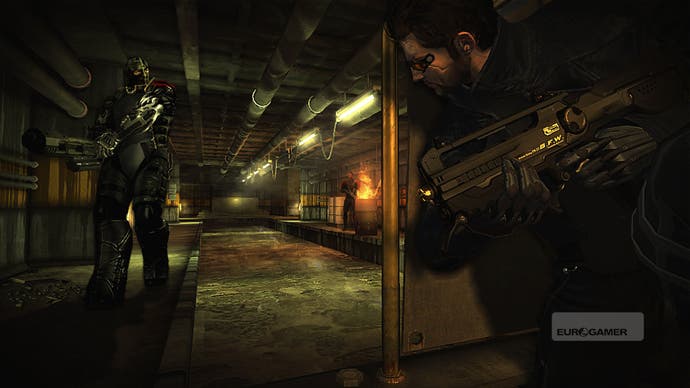
The game, however, will open with you (still non-augmented) playing through a murderous attack on Sarif's business by Black Ops mercenaries - all toting things like scary guns that pop out of their arms with a noise like a DVD tray opening.
This unfortunate situation leads to Jensen becoming all kinds of messed up: his only hope of salvation being for Sarif Industries to augment him without politely asking first. As such, you awake to find yourself mechanically violated and tasked with finding out just who or what prompted the assault.
What with this being Deus Ex, you won't know who to trust or who to kill; the only things that are certain are that there'll be a conspiracy that goes right to the top, and ultimately you'll decide the fate of humanity. No pressure then.
The world that you'll then stalk through, leather jacket flapping in the breeze, is a remarkable one. Not only will insanely futuristic buildings sit pretty within the recognisable dull and dowdy Detroit streets, but their occupants could be just as spectacular.

The fashion among the chattering classes is that of a cyber-renaissance - themes of Da Vinci and his anatomical studies, bouffant frills and ruffs in clothing and even floor designs taken from real-world castles and cathedrals can be found wherever the posh and augmented roam. Even Jensen has a velvet-y swirl design on his shoulders that wouldn't look entirely out of place on your grandmother's curtains.
The whole world won't be this way, however: not everyone has an art installation office apparently built only out of white walls, white floors, white furniture and with a general theme of white blinding light. The further down the social tree you go the less futuristic and frivolous the common man can afford to be.
Jensen himself lives in something of a halfway house: an apartment with arched windows, a vaulted ceiling, plush padded chairs and the occasional candelabra - but it's also very much reminiscent of the near-future shown in Minority Report with a vast screen at one end ticking over the news and sports results and hexagonal lights hanging from the ceiling.
The narrative detail Eidos Montreal is talking about is staggering. When you return from your elongated shift at Sarif Industries (perhaps with some newly elongated arms and legs) the plants in your flat will be withered and dying - what with Jensen having not been around to water them.



